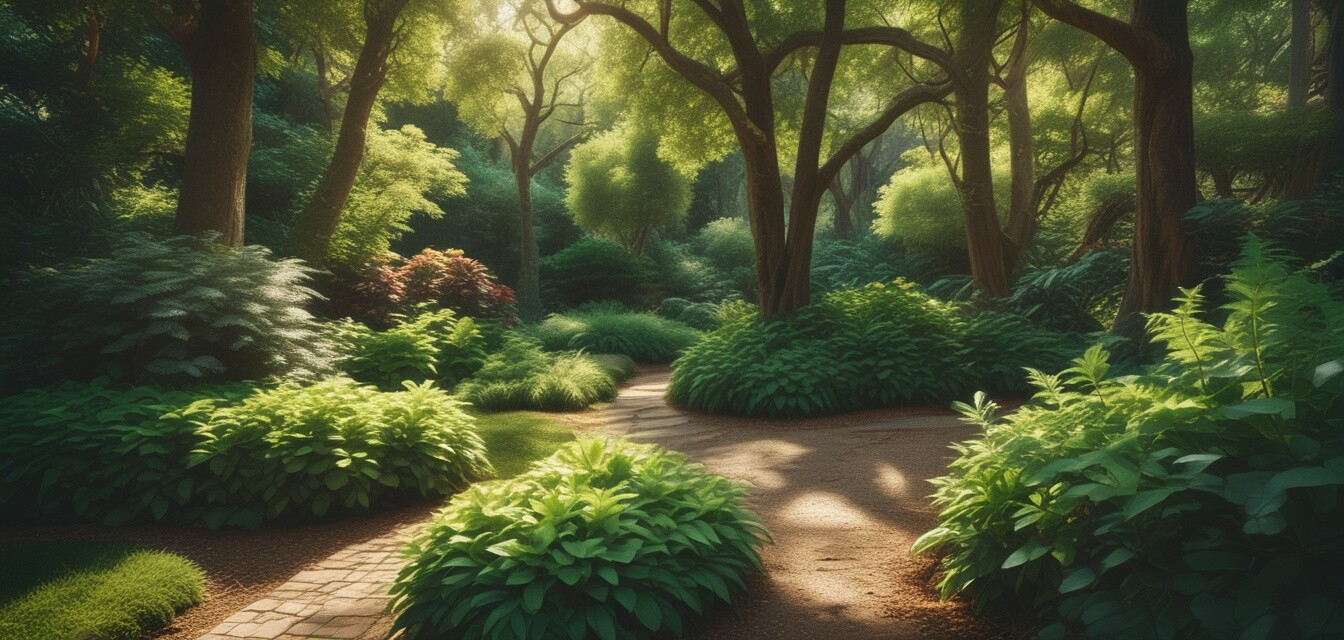
Creating a Shade Garden: Plants for Dappled Light
Key Takeaways
- Understand the importance of dappled light in shade gardens.
- Choose the right plants that thrive in lower light conditions.
- Incorporate design elements like paths and decorations to create visual interest.
- Maintain soil health through proper watering and mulching techniques.
- Regularly assess and adjust your garden layout for optimal growth.
Creating a shade garden can be a rewarding endeavor for any gardening enthusiast. Many homeowners are often deterred by shaded areas in their yards, considering them less appealing. However, with the right plants and thoughtful design, a shade garden can become an inviting oasis that adds depth and beauty to your landscape.
Understanding shade gardens
A shade garden typically exists in areas that receive limited sunlight during the day. Dappled light refers to sunlight that penetrates through foliage, providing plants with an ideal balance of light and shade for growth.
Benefits of shade gardens
- Reducing the need for constant watering due to lower evaporation rates.
- Creating a cooler outdoor space, perfect for relaxation.
- Enabling a diverse range of plant life that thrives in these conditions.
Choosing the right plants
When selecting plants for a shade garden, it’s essential to focus on those that thrive in dappled light. Below are some categories of plants that will flourish in these conditions:
| Plant Type | Examples | Characteristics |
|---|---|---|
| Perennials | Hostas, Ferns, Astilbes | Come back year after year, providing structure. |
| Annuals | Begonias, Impatiens | Brighten your garden with color during growing seasons. |
| Ground Cover | Ajuga, Vinca Minor | Help prevent weeds and retain moisture in the soil. |
| Shrubs | Azaleas, Rhododendrons | Provide structure, texture, and height variations. |
| Foliage Plants | Caladiums, Coleus | Feisty foliage that adds flair to shaded areas. |
Designing your shade garden
When it comes to transforming your shaded spaces, consider the following design elements:
Layout
Creating pathways or seating areas can enhance the usability and enjoyment of your shade garden. Think about:
- Curved or straight paths that can guide visitors through your garden.
- Strategically placed seating areas for relaxation.
- Layered planting to add depth and interest.
Incorporating design elements
To add an element of luxury, consider incorporating:
- Luxury planters for your potted plants.
- Outdoor lighting solutions that enhance your garden at night.
- Decorative stones or mulch to highlight plant colors.
Maintenance tips for your shade garden
To ensure your shade garden thrives, here are a few maintenance tips:
- Watering: Ensure soil stays moist but not soggy.
- Mulching: Use mulch to retain soil moisture and suppress weeds.
- Regular pruning: Keep plants healthy and promote airflow.
Regular assessment
It’s vital to assess your garden regularly. Look for:
- Plant health and growth.
- Soil condition and moisture levels.
- Overall design aesthetics and plant arrangement.
Conclusion
Creating a shade garden with plants for dappled light can be an enriching and enjoyable experience. By understanding which plants thrive in these conditions, thoughtfully designing your layout, and maintaining your garden regularly, you can transform shaded spaces into exquisite outdoor areas.
Pros
- Lower maintenance due to reduced evaporation.
- A diverse range of plants available for selection.
- Creates a peaceful outdoor retreat.
Cons
- Limited flowering plants compared to full sun gardens.
- Some plants may struggle with extreme shade conditions.
For further inspiration on gardening projects, check out our Garden Inspiration category.